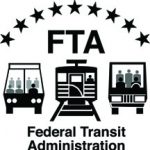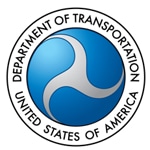Tag: U.S. Transportation Secretary Anthony Foxx

Foxx
U.S. Transportation Secretary Anthony Foxx has outlined his concerns about funding gaps in long-term transportation bills proposed by the House and the Senate.
In a letter he penned to Transportation and Infrastructure Committee Chairman Bill Shuster (R-Pa.) and released Monday, Foxx noted that each proposal significantly cuts funding for the Transportation Infrastructure Finance and Innovation Act (TIFIA) loan program.
Read more from Progressive Railroading.

SEATTLE – Because the future of our economy rests on a strong transportation system to move materials and products, today, U.S. Transportation Secretary Anthony Foxx released the draft National Freight Strategic Plan, which offers specific policy proposals and solutions to address the growing challenges of moving freight in this country. Now open for public comment, the draft Plan is an essential step for continuing to support the nation’s economy through the efficient movement of goods, while recognizing and responding to future infrastructure challenges. He was joined by Senator Maria Cantwell at Seattle Public School Headquarters.
Every day, millions of trucks, trains, aircraft, and ships move across the United States, transporting and delivering materials and products that are essential to our way of life and our economy. According to the most recent data released from the Bureau of Transportation Statistics, freight shipments last month reached an all-time high and were 30.4 percent higher than the recent low in April 2009 during the recession. While this increase in freight traffic is good news for our economy, concerns remain that our infrastructure cannot accommodate continued growth: in the next 30 years the population of the United States is expected to grow by 70 million people, and freight traffic is expected to increase by 42 percent by 2040.
“With an increasingly competitive and complex global marketplace and a deteriorating transportation infrastructure that is unfortunately showing the effects of age and underinvestment, the need for us to have a national freight plan could not be more urgent,” said U.S. Secretary of Transportation Anthony Foxx.
This draft Plan is a first-of-its-kind document that takes a comprehensive look at the Nation’s freight needs and future challenges and offers a roadmap for improvements. It proposes solutions and strategies to address the infrastructure, institutional, and financial bottlenecks that hinder the safe and efficient movement of goods. It also identifies many successful programs already in place to improve freight planning and investment, and proposes new programs and ideas that could make more progress possible. Importantly, it also recognizes the benefits of establishing a strong freight program in the next reauthorization bill.
“Congestion on rails, surface streets, and at our ports across the Pacific Northwest costs businesses billions of dollars a year and gives an edge to competitors around the globe. The National Freight Strategic Plan means places like Seattle and Tacoma will be part of our national strategy to quickly move products through traffic congested areas,” said Senator Cantwell.
These strategies include efforts to reduce congestion and increase efficiency while improving safety and reliability, and reducing adverse impacts on the environment and communities. This will include incorporating new technologies allowing for better quality data collection and faster analysis of freight routes, travel times, and infrastructure capacity. It also means breaking down institutional impediments, such as conflicting priorities at the Federal, State and local levels, and unnecessarily complex and lengthy permitting and approval processes. Building on existing efforts to improve coordination and synchronization across various levels of government, the draft Plan presents opportunities and potential pathways to enhance freight planning.
Specific strategies include:
- Ensure dedicated freight funding: The draft Plan emphasizes the importance of a dedicated freight program that would improve the movement of freight and meet regional economic demand and would require or incentivize State Freight Advisory Committees, State Freight Plans, and cross-jurisdictional/cooperative planning. The GROW AMERICA Act would provide $18 billion over six years through two dedicated, multimodal freight grant programs for targeted investments.
- Identify major trade gateways and multimodal national freight networks/corridors: U.S. DOT is releasing a draft Multimodal Freight Network (MFN) map to inform planners, private sector stakeholders, and the public about where major freight flows occur and where special attention to freight issues may be most warranted. U.S. DOT and the U.S. Department of Commerce have monitored and analyzed major trade gateways and freight corridors for decades, but the draft MFN combines the most critical modal components and shows the connections between them.
- Facilitate multijurisdictional, multimodal collaboration and solutions: U.S. DOT will continue its work to support local, State, and interagency collaboration, including close cooperation with port authorities, private sector stakeholders, and agencies in Canada and Mexico; sharing best practices for freight planning; supporting advisory committees and public forums with stakeholders; and encouraging effective use of funding available at the national level.
- Ensure availability of better data and models: U.S. DOT will continue to develop and deploy newer and more advanced freight data resources to the planning community and advance the measurement and analysis of transit times for different commodities from a multimodal, origin-to-destination perspective. Congress could enhance U.S. DOT’s authority to collect intermodal freight data by giving U.S. DOT’s Bureau of Transportation Statistics the authority to assemble intermodal freight movement data under the Intermodal Transportation Data Program, as proposed in the GROW AMERICA Act.
- Improve safety and support the adoption of new transportation technologies: U.S. DOT is undertaking new and innovative efforts to improve freight transportation safety. The Department recently announced the formation of a National Coalition on Truck Parking to improve commercial driver safety. U.S. DOT will also efforts to adopt new and exciting transportation technologies, including autonomous vehicles that promise to allow for safer and more reliable freight transportation.
- Develop the next generation freight transportation workforce: U.S. DOT is committed to promoting economic opportunity through high-quality transportation jobs as part of the President’s Ladders of Opportunity Initiative. Efforts include developing freight skills for State transportation agency and MPO staff through a growing body of resources and guidance on freight planning, and pushing for greater authority to develop workforce plans.
The most recent surface transportation reauthorization law, the Moving Ahead for Progress in the 21st Century Act (MAP-21), directed the U.S. Department of Transportation to develop a National Freight Strategic Plan laying out a course of action to meet National Freight Policy goals designed to improve the movement of freight in the U.S. The Department welcomes the public to provide feedback and comment on the draft National Freight Strategic Plan. To submit your thoughts and to learn more about the draft plan, visit www.transportation.gov/freight.

“Transit ridership is rising, public transportation equipment and infrastructure are aging, and there is a growing backlog of transit-related capital maintenance needs with limited funding available,” said U.S. Transportation Secretary Anthony Foxx. “Better and more efficient management of transit assets is a smart way to get more from our investments while ensuring we maintain the safe, reliable and accessible transit service the American public deserves.”
The proposed rule would require public transportation agencies to develop a Transit Asset Management (TAM) Plan that determines the condition of its capital assets, including the system’s equipment, rolling stock, infrastructure, and facilities. To reduce the burden on small operators, the proposed rule offers a two-tiered approach for the TAM Plan requirement. Small transit providers operating 100 or fewer vehicles in revenue service and no rail fixed-guideway service and all subrecipients under the Rural Area Formula Program would be allowed to participate in a Group TAM Plan that would be developed by a State or other direct recipient of FTA funding.
The Moving Ahead for Progress in the 21st Century Act (MAP-21) directs FTA to create a TAM System to help transit agencies achieve a better and more informed balance between system preservation and expansion projects, with a strong focus on improving safety. The TAM System is intended to provide a transit agency with a comprehensive understanding of how the condition of its capital assets may impact the safety of its system.
“Strategic and targeted investments to replace and rehabilitate aging transit infrastructure are needed to bring the Nation’s bus and rail systems into a state of good repair,” said FTA Acting Administrator Therese McMillan. “Given the diversity of transit systems, from complex urban networks to small operators in rural communities, the proposed rule offers a flexible approach for public transportation providers to better manage and maintain their assets.”
The proposed rule would also define the term “state of good repair,” establish state of good repair performance measures, and have transit agencies set performance targets based on those measures, which they can then use to prioritize limited capital investment funding. In addition, transit agencies would be required to report new information to the National Transit Database.
Insufficient funding combined with inadequate asset management practices have contributed to an estimated $86 billion transit in state of good repair backlogs nationwide that continues to grow with reduced levels of investment. To address this need, the Administration’s multi-year transportation funding bill, the GROW AMERICA Act, proposes a total of $7.6 billion in fiscal year 2016 to support FTA’s state of good repair efforts, with incremental increases in each fiscal year through the end of the Act’s authorization period.
Public comments on the proposed rule are accepted through Nov. 30, 2015.

WASHINGTON – U.S. Transportation Secretary Anthony Foxx today formally unveiled the Department of Transportation’s Build America Transportation Investment Center (BATIC).
BATIC will serve as the single point of contact and coordination for states, municipalities and project sponsors looking to utilize federal transportation expertise, apply for federal transportation credit programs and explore ways to access private capital in public private partnerships.
Andrew Curtis Right will serve as the Executive Director of BATIC. Prior to serving at USDOT, Right worked in the financial services industry advising on transportation infrastructure transactions. Right received a B.S.E. in Civil Engineering and Operations Research, with certificates (minors) in Engineering and Management Systems and Public and International Affairs, graduating Summa Cum Laude and Phi Beta Kappa from Princeton University in 1997. He also received an M.B.A. from the Harvard Business School in 2003 where he was elected a Baker Scholar, the designation for the top 5 percent of the graduating class.
“With his background in civil engineering and infrastructure financing, no one is more qualified and ready to lead BATIC than Andrew,” said U.S. Transportation Secretary Anthony Foxx. “He and his team will provide project partners and potential investors with the clarity and technical assistance they need to move more projects forward and reduce our nation’s infrastructure deficit.”
BATIC was established a year ago and is the product of President Obama’s Build America Investment Initiative, a government-wide effort aimed to harness the potential of private capital to complement government funding. BATIC will assist project sponsors to navigate the procedural, permitting, and financial barriers to increased infrastructure investment and development.
BATIC will work with AASHTO through a cooperative agreement to establish The BATIC Institute: An AASHTO Center for Excellence (the Institute). The BATIC Institute will aim to improve State DOTs and other public sector organizations’ ability to effectively employ project finance tools through a program of training, sharing best practices, and technical assistance. As part of this effort, AASHTO and USDOT will work with project sponsors across the country to identify institutional capacity building needs and develop resources.
“Transportation departments are increasingly challenged to find the financial resources needed to maintain and modernize their aging infrastructure systems,” said AASHTO Executive Director Bud Wright. “This Institute is a vital resource for state and local government officials looking to identify and utilize ‘real world’ solutions to finance transportation projects.”
In the fall of 2016, the Department of Transportation will be unveiling a new state of the art center of excellence for BATIC. The space will be modernized to include updated standard design features, modernized technology, and collaborative space designed to foster the “one stop shopping” concept that the BATIC embodies as a core business practice.
Secretary Foxx and Right will travel to New Jersey on Thursday to participate in a BATIC press conference at the Port of Newark.
For more information, please visit www.transportation.gov/BATIC.

House Transportation Committee Chairman Bill Shuster (R-Pa.) is expected to call for the creation of a new non-governmental agency that would take over air traffic control from the Federal Aviation Administration in a forthcoming funding bill for the agency.
Foxx said Wednesday, during a meeting with reporters at the Transportation Department’s headquarters that he did not see the need to remove the federal government from the airplane navigation process.
Read more from The Hill.

Speaking at a town hall at Google headquarters in Mountain View, Calif., Foxx highlighted the president’s budget proposal, which notably includes funding to advance research and autonomous vehicles, while announcing his report “Beyond Traffic,” a look at future trends and choices that will impact America’s transportation system over the next three decades.
“Our budget proposal lays the foundation for a future where our transportation infrastructure meets the demands of a growing population and an economy that depends on the free flow of freight,” Foxx said. “This administration is looking towards the horizon – the future – but to do this we need Congress’ partnership to pass a long-term reauthorization to put Americans to work rebuilding America.”
According to the Department of Transportation, the last year has demonstrated the pitfalls of repeated short term funding extensions and is why the president’s FY 2016 budget creates additional certainty with a six-year $478 billion surface transportation reauthorization proposal that would improve America’s highways, ports, and transit networks. The proposal would better ensure these systems are safe, and support the development of a high-performance rail system. The proposed budget would be paid for in part with $238 billion from transition revenues generated from pro-growth business tax reform.
In the last six years, according to the DOT, Congress has passed 32 short-term measures that have failed to adequately address the needs of our aging infrastructure. To keep our roads and bridges in good condition, all levels of government – federal, state, and local – will need to spend at a minimum $124 billion annually; current spending is at $100 billion. For transit projects alone, there is an $86 billion backlog in maintenance needs that grows each year.
In order to tackle the country’s infrastructure deficit and support job creation, the six-year budget includes $317 billion to rebuild America’s roads and bridges, an increase of almost 29 percent over current investment in our highway system. To help meet growing demand, the budget provides more than $143 billion to create and improve transit and passenger rail service.
The budget provides $18 billion for multi-modal freight programs to strengthen America’s global competitiveness and support the president’s “Made In America” trade agenda. In 2013, exports of goods and services reached an all-time high of $2.3 trillion, supporting 11.3 million good paying American jobs across the country. Building on the success of the 2010 National Export Initiative (NEI), the Administration has launched NEI/NEXT to help more American businesses export to more overseas markets.
To encourage private sector investment, the budget includes $1 billion annually for credit assistance for nationally or regionally significant transportation projects through the Transportation Infrastructure Finance and Innovation Act (TIFIA) Program. The budget would also create a new Office of the Assistant Secretary for Innovative Finance to manage the Department’s credit programs and help projects develop plans to utilize innovative financing.
The FY 2016 budget reinforces the department’s commitment to safety, creating a new Office of Safety Oversight housed in the office of the secretary to improve safety efforts across all modes of transportation. The six-year proposal increases funding for the National Highway Traffic Safety Administration (NHTSA) by an average of 20 percent over current investment levels, providing $6 billion to address safety defects on our highways. This includes $31 million in FY 2016 for NHTSA’s Office of Defects Investigation (ODI) to enhance our ability to monitor data, find defects sooner, and strengthen NHTSA’s ability to conduct investigations of vehicles with suspected defects.
To improve safety on commuter systems, the budget provides $3 billion over six years to help with the implementation of Positive Train Control. In addition, $29 billion would be provided for targeted infrastructure investments for deficient roads and bridges through the Critical Immediate Safety Investments Program, including $7.35 billion for rural communities.
Building on the department’s commitment to safety on America’s roads, the budget invests $935 million over six years in the future of Intelligent Transportation Systems (ITS), including $158 million in FY 2016 to accelerate research on vehicle automation and vehicle-to-vehicle (V2V) technology.
As cars exchange safety data on speed, direction, and relative position to surrounding vehicles and infrastructure, research estimates that V2V technology has the potential to reduce 70 to 80 percent of vehicle crashes. Such innovative technology will help American workers and goods travel faster and safer on our roads.
To modernize and improve NHTSA’s data collection tools, the budget includes $41.7 million in FY 2016 to establish data collections sites and expand the agencies analytical capacity.
In addition, the FY 2016 budget includes $956 million to continue efforts to modernize America’s air-traffic control system and help transition from a ground-based radar system to a more accurate, satellite-based system of the future, known as NextGen.

“This project will put time back in the lives of commuters along this corridor, but the real story is about the potential for change this smart investment will bring for residents,” said Secretary Foxx. “We are proud to support projects like this one because when you connect people to more jobs, education, and medical care, you create the ladders to opportunity that strengthen families and the communities in which they live.”
The 4.7-mile light rail extension will extend existing MBTA Green Line service from a relocated Lechmere Station in East Cambridge to Union Square in Somerville and College Avenue in Medford. The project will serve some of the Boston region’s most heavily populated areas not currently served by rail transit – where 26 percent of residents do not own or have access to cars.
“The Green Line extension will improve transit options for residents of Somerville and Medford by eliminating the need for bus to rail transfers and providing a one-seat transit ride to thousands of jobs in downtown Boston and along the Green Line,” said Acting Federal Transit Administrator McMillan. “This project will make a huge difference for thousands of residents along the corridor who need and deserve reliable access to jobs and educational opportunities throughout the Boston metropolitan area.”
The U.S. Department of Transportation will contribute approximately $996 million in Federal Transit Administration (FTA) Capital Investment Grant Program (New Starts) funding over the course of the $2.3 billion project. State funding sources will cover the remainder.
MBTA estimates the new extended light rail line will provide approximately 37,900 daily trips when the extension opens in 2021. The project will include construction of six new stations, purchase of 24 new light rail vehicles, construction of a new vehicle maintenance facility, construction of a community bicycle and pedestrian path in Somerville, and relocation of some existing commuter rail track.

“Clear communication is critical to keeping employees out of harm’s way,” said U.S. Transportation Secretary Anthony Foxx. “I want railway workers to return home safely to their families after their shift and it is the responsibility of the railroads and their employees to keep the work environment as safe as possible.”
Safety Advisory 2014-02 Roadway Worker Authority Limits, highlights the need for railroads to ensure that appropriate safety redundancies are in place in the event an employee fails to comply with existing rules and procedures. The advisory describes several related incidents and stresses the importance of clear communication and the need for railroads to monitor their employees for compliance. This Safety Advisory satisfies one National Transportation Safety Board (NTSB) safety recommendation related to dispatchers and partially addresses another related to redundant signal protection.
There are three safety measures in the advisory designed to reduce incidents that FRA expects railroads to take action on immediately:
- Increase monitoring of their employees for compliance with existing applicable rules and procedures.
- Examine train dispatching systems, rules, and procedures to ensure that appropriate safety redundancies are in place.
- If a railroad determines that appropriate safety redundancies are not in place, adopt electronic technology—such as the Enhanced Employee Protection System, Hi-Rail Limits Compliance System, and the Train Approach Warning System—that would provide appropriate safety redundancies.
Until such technologies are in place, railroads should stress importance of dispatchers being advised of roadway workers’ whereabouts and work plans; forbid student dispatchers from removing blocking devises until confirmed by a supervisor; and that, prior to passing any absolute signal, a roadway worker should verify the limits of his or her authority.
FRA believes positive train control, a system for monitoring and controlling train movements to enhance safety, would have prevented the incidents described in the Safety Advisory.
However, where Positive Train Control is not in effect, FRA recommends that railroads adopt one or more electronic technologies that may serve to fill the technology gap and safeguard roadway workers.